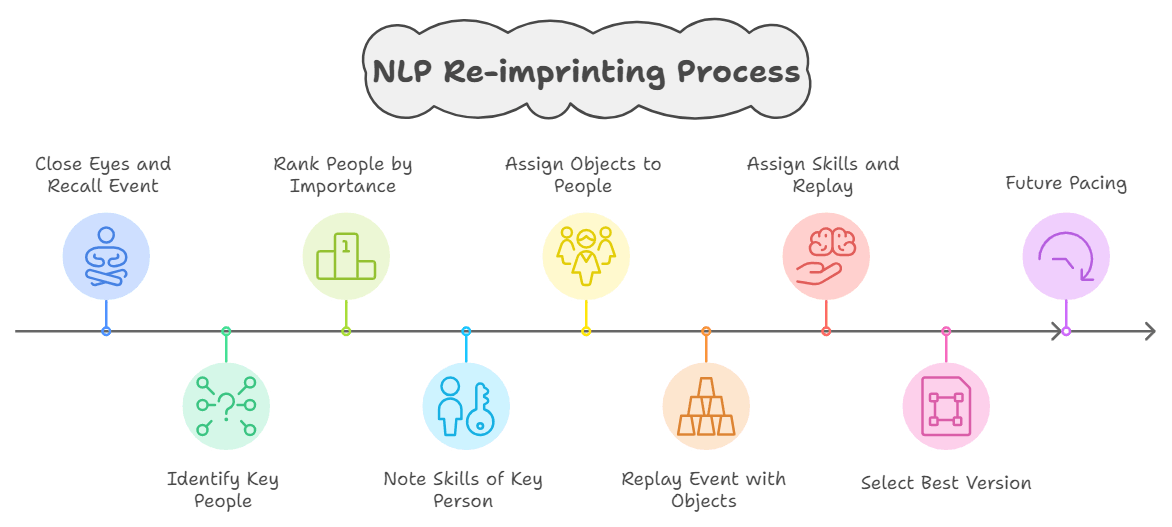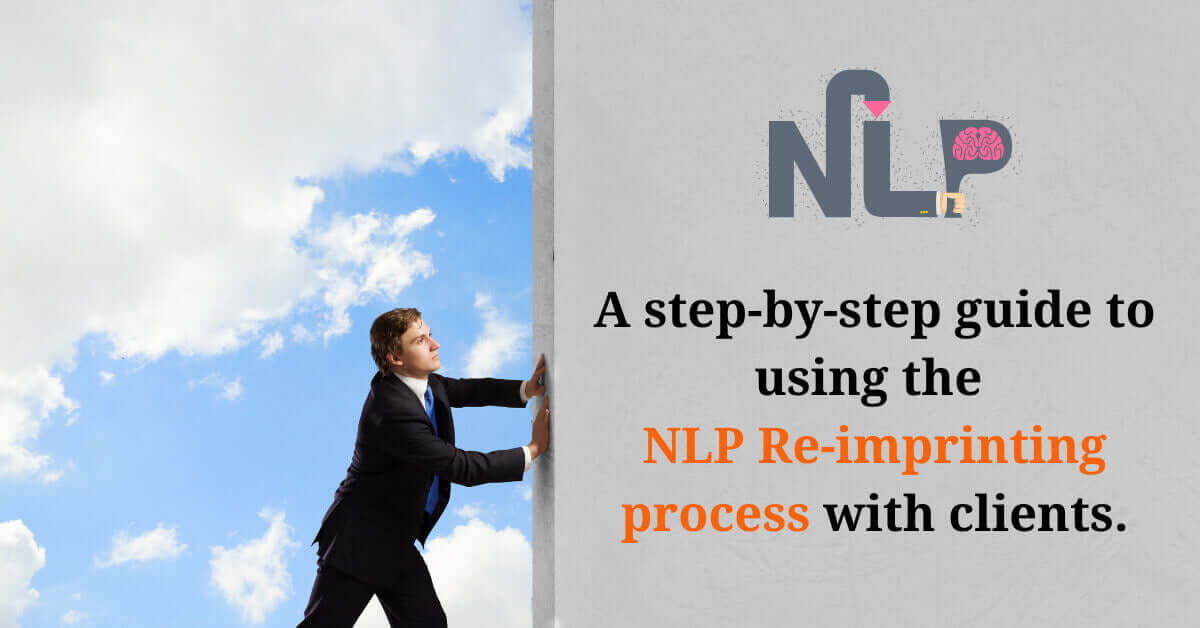Introduction
Sometimes, clients will tell you that their life was turned upside down due to a specific event in their life. The way they thought and felt about themselves, others, and the world completely changed after this event.
They will tell you that they know this event will not repeat. Most people in their life don’t even know the event happened, and the ones who know may have already forgotten about it. But the client himself is just not able to get over it.
Example of when to use NLP Re-imprinting Technique
Take the example of a client who tells you that as a child, I once defecated in my pants while I was in school. All my classmates laughed at me, my teacher insulted me in front of the class, and the maid who helped me clean up got angry. After this event, I wasn’t the same.
From someone who was very outgoing and talkative in class, I became very withdrawn, mostly stopped engaging with others, and started having self-doubts.
It was very difficult for me to trust people and make friends after this. And I have been struggling with all of these till today. This has also been a significant source of problems in my relationships and career. Rationally I understand that the event is in the past, but I don’t know what else to do.
It is with clients like these that I would use the NLP Re-imprinting process. This process changes how the memory is stored in the client’s mind. After the process, when the client tries to remember the event, it is tough for them to remember the actual event.
In most cases, at least initially, the client may know what the event was but when they try to recollect it, a different version of the event comes to their mind.
The client, in the coming days, also notices how their beliefs, thoughts, feelings, and behaviours are now being influenced by the new version of the event instead of the old one.
So before we begin the NLP Re-imprinting process, since we are changing how the memory is stored in their mind, it is important to check that the possibility of the event happening again in the client’s life is highly unlikely and that there are no people in their life who will bring up the event in conversations with them.
A step-by-step guide with the NLP Re-imprinting process

Once we are certain of this, the first step is to ask the client to close their eyes and think about the specific event. Make sure that the client is disassociated while they are recollecting the memory. Once the client says that they have a clear recollection of the event, the next step is to ask them about the no. of key people or groups of people that played an important role in the event.
So, for example, in the case I shared above, there are four key sets of people: Classmates, the teacher, the client themselves, and the maid.
Next ask the client to open their eyes, take a moment or two, and then write on a paper, in the order of the importance of the role played, the people that the client identified in the last step. In our example, let’s say, the teacher played the most important role as per the client, followed by himself, then the maid, and finally, the classmates.
Next, ask the client to think about the most important person in the event, in our case, the teacher, and make a note of all the skills that this person needed to manage the event most effectively such that the transformed event would end in a way that is more positive for the client.
Next, ask the client to identify the skills of each of the other people, and the skills with which each of these people could have transformed the event.
Next, ask the client to select as many objects from around them as the no. of people on the list and assign them to represent each person on the list. These objects could be anything, a pen, pencil, candy, or phone…
Next, ask the client to place each object in front of them on a surface like a floor or a table in a manner that the placement on the surface represents their relative physical location in the actual event.

Once the client can place the objects, ask the client to look at the objects and replay the entire event in front of them, imagining each object turning into the people that they represent.
Once the client can replay the event completely, ask them to assign all the skills that were listed in front of the most important person to that person and then imagine how the event would play out once this person has the required skills. The client will notice how the new event turns out better for the client.
Next, ask the client to take back the skills from the most important person, so they are back to what they were earlier and only give the skills of the second most important person to that person. Imagine how the event will turn out when this person has the required skills.
Repeat this process of imagining the event playing out differently, with each person having the required skills with the others not having the same.
Next, ask the client to imagine that all people in the event have the required skills and check how the event finally turns out.
Once the client has been able to imagine the event playing out differently, first with each person having the skills one at a time and then all having the required skills, ask the client which new version of the event they find the best.
Whichever version of the event the client finds the best, ask them to replay that version in their mind once again from the beginning to the end. Then ask them to imagine this version again seven or eight times. Each time the speed at which they imagine the event becomes faster than the last time. So first time at normal speed, then two times the speed, and so on.
Lastly, ask the client to pick up each of these objects from the surface and put them back where they picked them. Ask the client to walk around, talk about how they are feeling now, and maybe even about other unrelated things. The objective is to create a broken state.
After the break state, ask the client to close their eyes and try to go back to the original event. Ask them to try hard to remember the original event completely and suggest that no matter how hard they try, they are not able to recollect the exact original event. It is the new version that keeps playing in their mind. Once the client confirms this, ask them to notice how it feels now.
Next, do future pacing for the specific areas in the clients’ life where they will notice major differences as a result of the transformation of this one specific event.
This is an amazingly simple yet powerful process. It is also one of the processes where you are helping the client experience a deep hypnotic state with their eyes open.
Just a note of caution, at the beginning, when you ask the client to remember the event with their eyes closed, if they start experiencing intense emotions, first help them release these emotions using some other process. I generally use the release metaphor process for the same and then continue with the recollection of the event.
Interested in learning advanced techniques under supervision?
In case you are a practising psychologist who likes to learn NLP Re-imprinting process and other powerful techniques under supervision and guidance, then do check out the Cognitive Hypnotic Psychotherapy® Diploma. You will not just learn Hypnodrama and a lot more but also how to integrate multiple techniques seamlessly as a part of a comprehensive eclectic approach to therapy.

